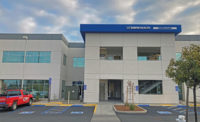The more professional services a company can offer, the more opportunities it will find for future work. And when it comes to utility work, W.A. Rasic (WAR) has a diverse portfolio to showcase its capabilities.
As ENR California and Northwest Specialty Contractor of the Year, the company has spent the last 20 years installing all facets of underground utility work—including water, sewer and storm drains; petroleum, natural gas, power and communication lines; microtunneling; and cast-in-place concrete-related construction projects—helping to meet urgent needs that address some of California’s most pressing problems, including wildfires, drought, water supply and power capacity.
“A component to our success is our diversification,” says Walter Rasic Jr., principal at W.A. Rasic. “We realized that many utility markets are cyclical, and expanding our services and capabilities was the best way to ensure our longevity.”
Founded in 1978 and based in Long Beach, Calif., W.A. Rasic is one of the largest privately owned utility contractors in the Western U.S. The company, with four California offices and approximately 550 employees, works on about 1,000 projects a year for clients such as Los Angeles World Airports, Los Angeles County Dept. of Public Works, the city of San Diego and the Eastern Municipal Water District.
Rasic, the youngest son of company founder Walter Rasic, says his company focuses on replacing aging utility infrastructure throughout the West and supporting clients on all projects regardless of size, location or complexity. The contractor grew its California revenue more than 50% year over year from $106.2 million in 2019 to $162.7 million in 2020. The contractor expects 2021 California revenue of $200 million.
Three things combined to produce the increase. Despite COVID-19, some of the company’s larger projects were in full swing last year, and W.A. Rasic secured additional multiyear contracts with 2020 starts. Meanwhile, the company’s different lines of business are operating at a healthy capacity.
“Many of our clients took advantage of the reduced traffic during the pandemic to construct their projects,” says David P. Lee, W.A. Rasic vice president. “Since a significant amount of our projects are constructed in major metropolitan areas, the construction of utility infrastructure in a reduced traffic environment equates to significant savings being realized by our clients.”
Rasic expects continued growth across all lines of business due to aging infrastructure, with water and power continuing to be a strong market, especially in California. “With persistent drought and fire plaguing California, we have seen an increase in large water projects as well as the conversion of overhead power lines to underground for fire protection in high-risk areas,” Rasic says.
Public Works
The company recently started an emergency project for the Los Angeles County Dept. of Public Works that calls for removing 4.9 million cu yd of post-fire sediment behind a reservoir in a remote area of the San Gabriel Mountains. The plan is to move approximately 10,000 cu yd of sediment a day to a designated fill site located seven miles away to abate excessive erosion caused by recent wildfires.
“Many of our clients took advantage of the reduced traffic during the pandemic to construct their projects.”
—David Lee, Vice President, W.A. Rasic
“This $92-million project required us to mobilize a significant amount of excavating and support equipment six weeks after the project bid, so you can imagine the logistical issue with permitting and resource allocation,” says Lee. “Furthermore, we can only work in the reservoir between April 15 and Oct. 15, and before we can start sediment excavation, we have to dewater the existing reservoir as well as control the influx of surface water during construction.”
W.A. Rasic just completed exploratory excavations and preliminary work for a $50-million public-private partnership that involves replacing a central utility plant and associated distribution piping replacement on an active university campus in California. The project, which should be in full swing in the first quarter of 2022, also will replace approximately 60,000 linear ft of chilled and hot water piping, convert facilities and buildings over to the new system, restore associated paving and landscaping and provide daily management of pedestrians.
Meanwhile, W.A. Rasic is working on the City Trunk Line South Unit 3 (CLTS3), which replaces an aging pipeline for Los Angeles Dept. of Water and Power’s capital improvement program. Ali R. Sabouni, construction management and support contracts manager for LADWP, says he has worked with W.A. Rasic for 14 years, and lauds their flexibility, communication skills, on-time delivery and strong and supportive management needed to overcome a major tunneling challenge caused by unknown tie-backs mid-tunnel.
That challenge arose after a private developer obtained L.A. city approval to install tie-backs for supporting a beam along the CTLS3 tunnel route. The developer had installed about eight tie-backs before the W.A. Rasic team had to intervene. “If we had encountered the tie-backs while utilizing the slurry microtunnel boring machine, the machine may have been unable to get past the tiebacks, requiring a pit to retrieve the stuck microtunnel boring machine,” says Jeremy Juarez, director of public works for W.A. Rasic.
To resolve the issue with the tie-backs, Juarez says his team proposed utilizing an open-face tunnel machine in conjunction with existing project material such as casing pipe, carrier pipe and jacking/receiving pits to save time and money.
Scott Traweek, senior underground distribution and construction supervisor for LADWP, has worked beside W.A. Rasic for more than a decade. He says the firm’s workmanship, team attitude, experience and response time make it one of the “best contractors” he has worked with.
“On a current LADWP ongoing contract, which includes running 10-plus crews, W.A. Rasic’s team is involved daily with expertise and ingenuity,” says Traweek. “Due to their vast knowledge in the underground division, we are able to expedite a bigger workload, contributing to upgrading of infrastructure at a faster pace.”
Late this year, W.A. Rasic will break ground on the $123-million Pure Water Pipeline Project for the city of San Diego. “In this environment, one of the keys to gaining more market share is our ability to develop and execute plans quickly to meet the client’s needs and then to deliver as promised, which gives rise to those clients sending more work our way,” adds Rasic.
He says his company also just finished its first self-performed $48-million slurry microtunneling project for LADWP. “Looking ahead, we want to continue to expand our tunneling capabilities with the ability to self-perform this type of work, which will allow us even more opportunity for continued revenue and growth,” says Rasic.






Post a comment to this article
Report Abusive Comment